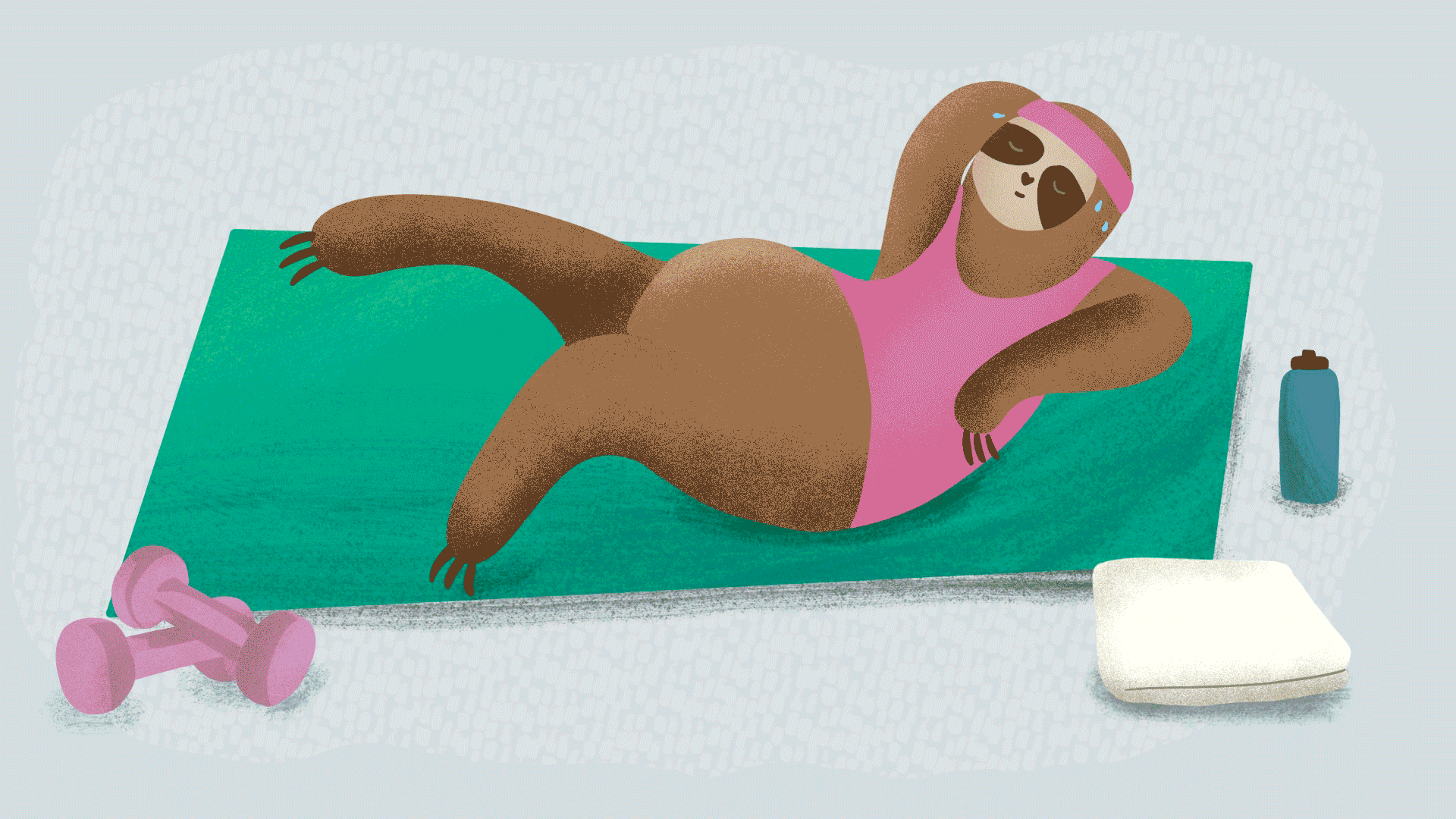- March 12, 2024
- By Maggie Haslam
After a dreary winter—and brutal flu and cold season—most of us are welcoming a new kind of affliction: spring fever. Coma-like weeks on the couch, whether brought on by a super virus or the new season of “Vanderpump Rules,” may have you itching to resuscitate your fitness routine—or reluctant to emerge from hibernation.
“It’s like Newton’s first law of motion,” said Sushant Ranadive, an associate professor of kinesiology at the University of Maryland. “It takes a lot to get back into it if you’ve been out of commission for a few weeks. And the inertia component is very tricky to break in humans, despite the fact we all know exercise is really good for you.”
According to the Centers for Disease Control, only 28% of Americans are meeting the physical activity guidelines set by the agency, and a fifth of adults scale back during the winter. If you’ve lost your momentum to move, are making a COVID comeback or are buried in the slog of the spring semester, getting back on track doesn’t require a gym membership, a lengthy block of time—or even workout clothes, he said.
“I think people have made exercise more complicated than it needs to be,” he said.
As you kick the balled-up Kleenex away from your running sneakers, Ranadive has some suggestions for easing back into exercise.
Work smarter, not harder. There’s a misconception that unless you can hit the gym for an hour, exercise isn’t beneficial, said Ranadive. But even five-minute increments throughout the day can reap fitness benefits and break up swaths of desk jockeying (research shows that four hours of sedentary sitting temporarily harms the vascular health of even young, healthy individuals). Ranadive recommends taking the stairs, doing lunges while your coffee brews or briskly walking to a colleague’s office across the building instead of calling or emailing. “If you think of it like a bucket, where you accumulate physical activity throughout the day, it changes people's perspective.”
Fill before you drill. Nutrition and hydration are particularly important after any illness, when your body is depleting its energy stores to fight infection (which is why you feel weak when you’re under the weather). And while water bottles have become the 21st-century appendages no one predicted, most of us don’t drink enough of it when sick, said Ranadive. He recommends filling up on water regularly (skip the Gatorade) and simple carbs, such as bananas, to get your body ready to move again.
It’s about fitness, not “fatness.” Being thin does not make you fit, said Ranadive. In fact, visceral fat—the kind that builds up from a sedentary lifestyle, envelopes your organs and puts you at risk for heart disease, stroke and type 2 diabetes—can be hard to detect, see or even feel. “There are plenty of skinny people who suffer from visceral adiposity,” he said. Exercise is key to reducing this fat, which tends to park around your belly. “Don’t look at the number on the scale, look at how your clothes fit after starting an exercise routine,” he said. “If your jeans are looser in the waist, it means you’re losing this adiposity.”
Start slow. If you’re a runner and are coming off the flu, an “easy” 5K could have you limping to the finish line. “Jumping right back in after a period of inactivity is what causes the most injuries,” said Ranadive. Prolonged, vigorous exercise, he said, can sometimes make athletes more susceptible to illness for up to 24 hours—called the open window theory—and is another reason that recently sick people with recovering systems should not push themselves. Low-impact exercises such as walking are a great reintroduction and offer the same health benefits without the risk.
Get on the floor to rock your core. Core body exercises are the unsung heroes of fitness—they are easy to do, don’t require special equipment (or even a change of clothes) and take very little time. They are essential for balance and “keeping yourself upright,” said Ranadive; building your core also protects against back injuries and prepares your body for exercise. While some office mates may abandon their chairs for oversize exercise balls, they aren’t meant for an eight-hour workday seating. “Sitting on a ball all day can also cause fatigue and impact your ability to focus; so use in moderation,” he said. Instead, Ranadive recommends the classic plank and the “dead bug”: lying on your back with your legs and arms extended straight into the air.
Looking for quick exercises to tackle throughout the day? Try adding these moves every 60-90 minutes to boost your mood, fight disease and increase your fitness:
- 1st and 4th hours: 10 pushups, 5 squats, 5 lunges
- 2nd and 5th hours: 5 burpees, a 30-second front plank, 10 crunches or dead bugs
- 3rd and 6th hours: 15 jumping jacks, 10 high knees, 10 calf raises
Topics
ResearchUnits
School of Public Health